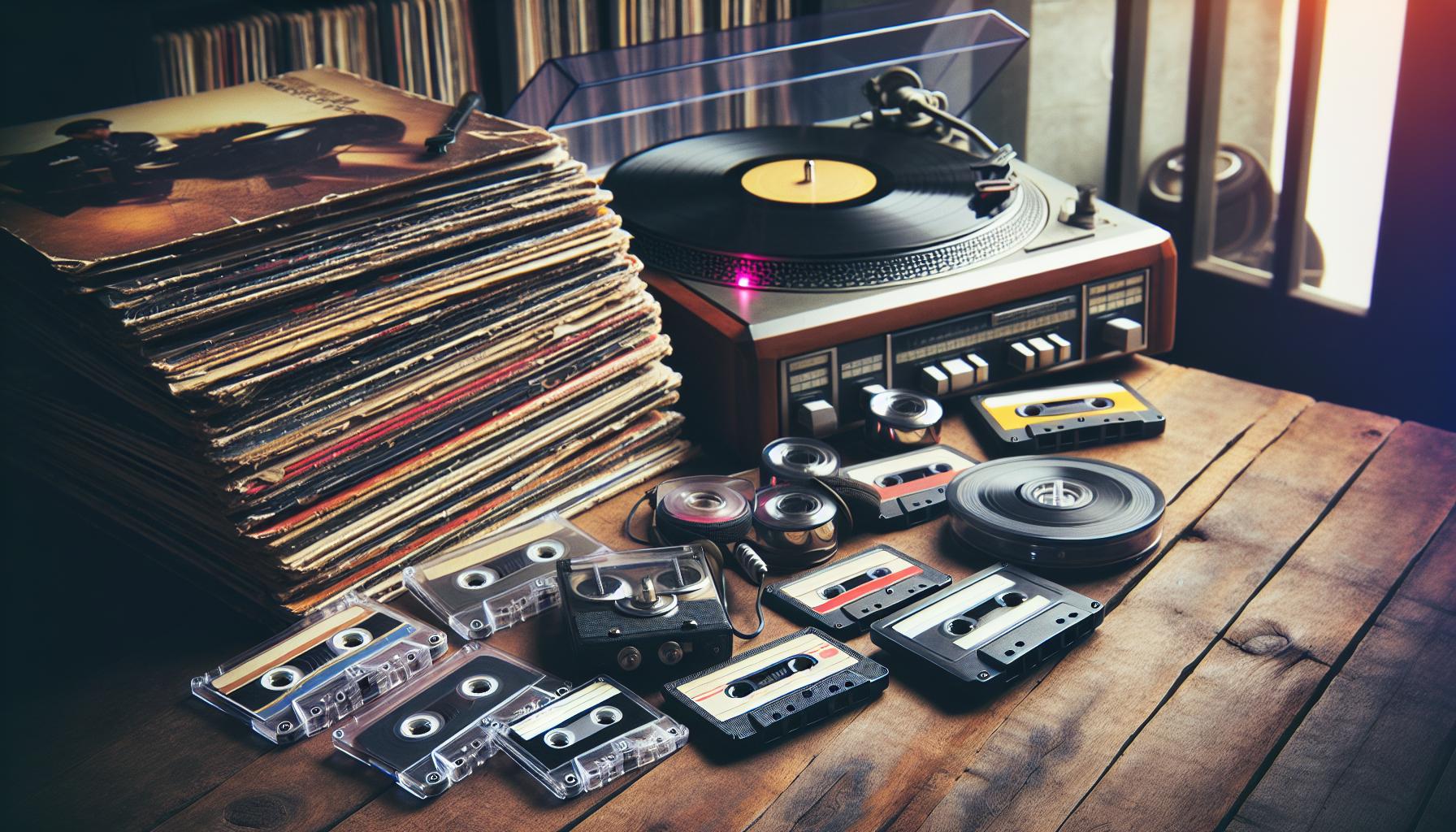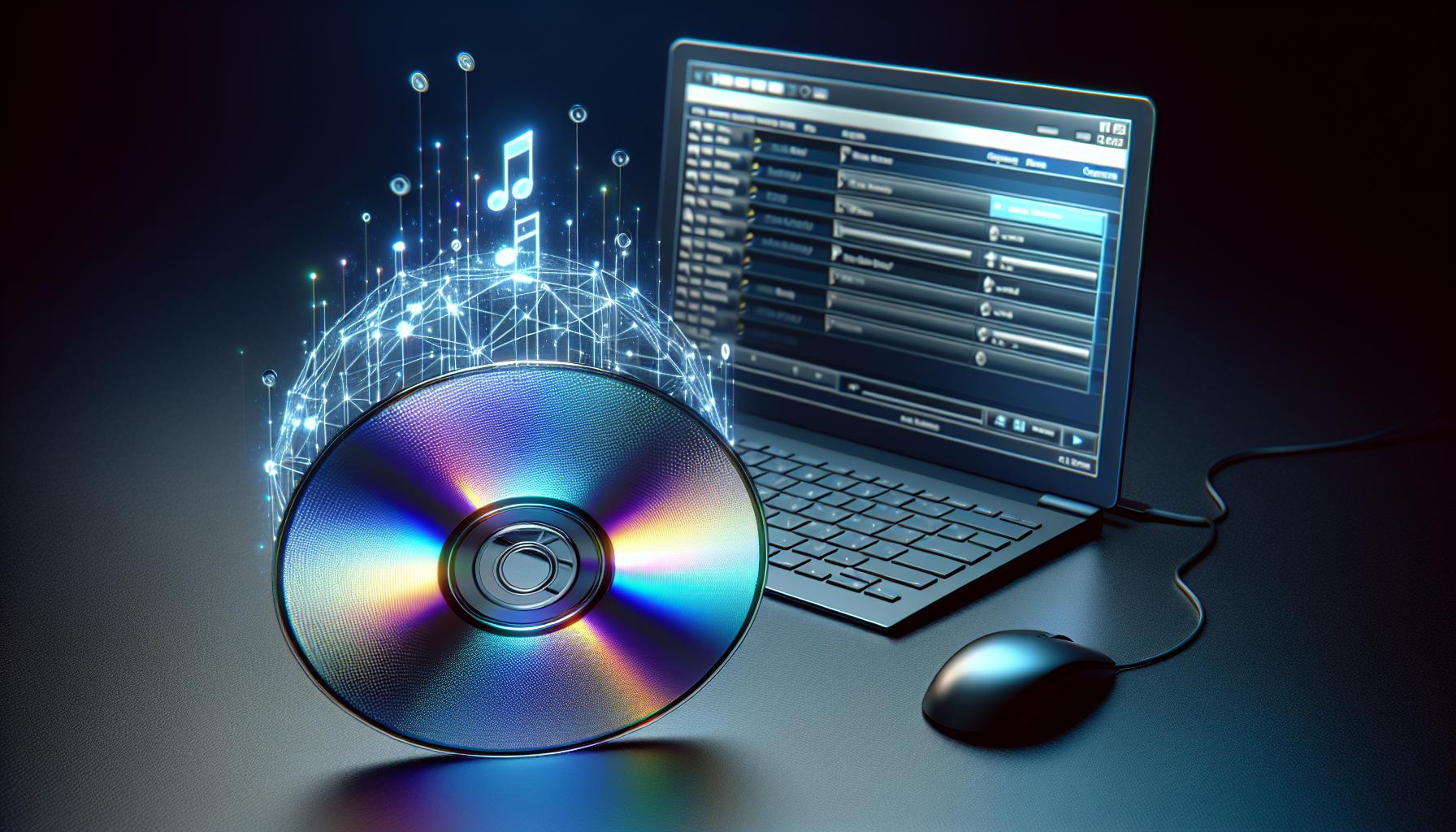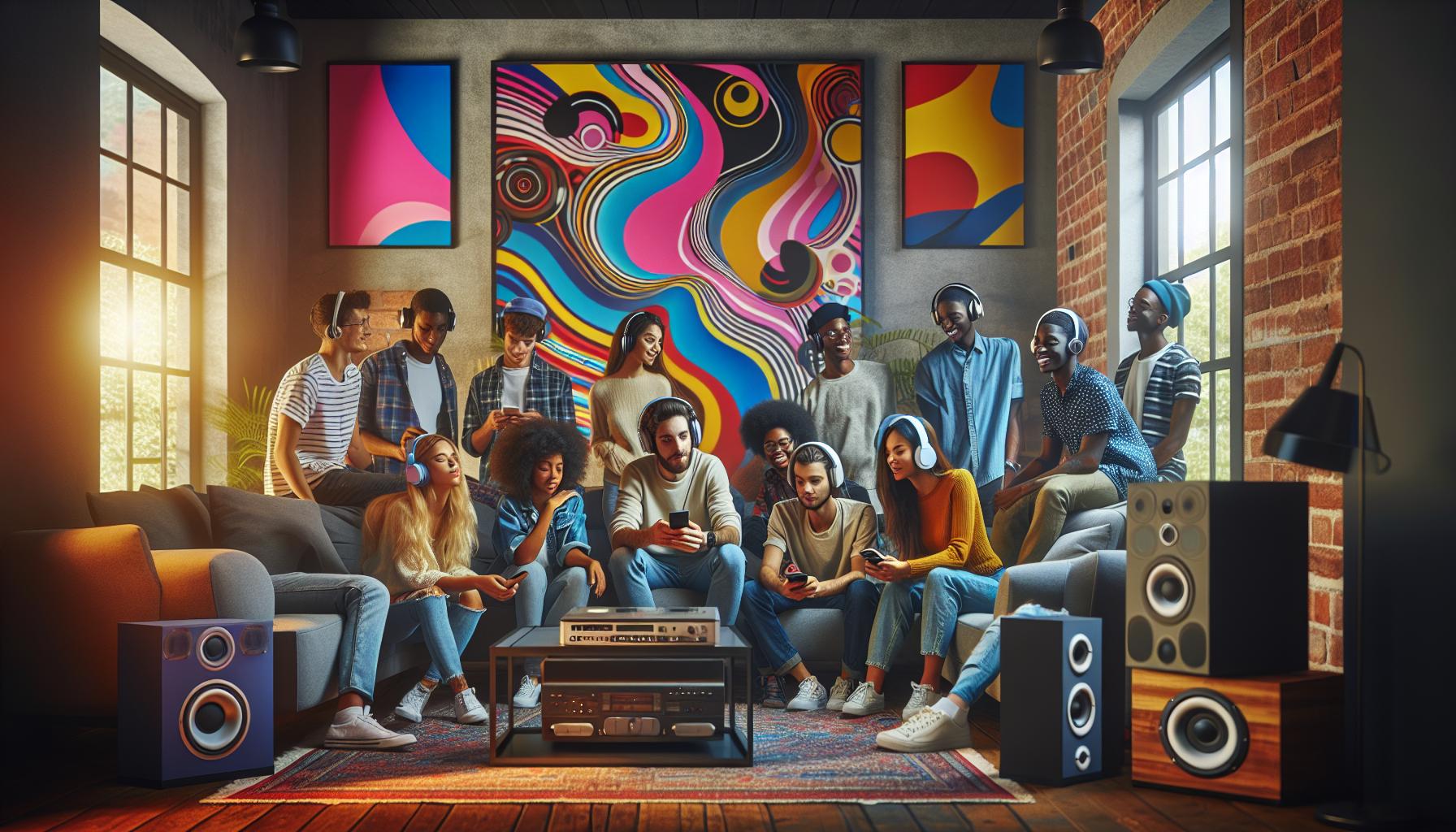Music distribution has evolved dramatically over the centuries, shaping how artists connect with their audiences. From the early days of live performances in local taverns to the rise of vinyl records, each era brought new ways to share music. The transition from physical formats to digital platforms marked a significant turning point, revolutionizing the industry and altering consumption habits.
Today, streaming services dominate the landscape, allowing listeners to access vast libraries of music at their fingertips. This shift not only transformed how music is distributed but also how it’s marketed and monetized. Understanding the history of music distribution reveals the intricate relationship between technology and creativity, highlighting the ongoing evolution of an art form that continues to resonate across generations.
Key Takeaways
- Evolution of Music Distribution: The history of music distribution showcases a transition from live performances to various physical formats, ultimately moving towards digital platforms and streaming services.
- Impact of Recorded Music: The invention of the phonograph in 1877 and subsequent developments like the gramophone transformed music sharing, enabling commercial music distribution and reducing reliance on live events.
- Rise of Physical Media: The popularity of vinyl records and cassettes in the 20th century revolutionized music consumption, making music more accessible and establishing dedicated fan communities.
- Digital Transformation: The advent of CDs and MP3 formats fundamentally changed music distribution, allowing for easier sharing and leading to significant shifts in industry practices and revenue models.
- Streaming Dominance: Streaming services have become the primary method of music consumption, offering vast libraries and reflecting new consumer preferences focused on convenience and variety.
- Changing Artist Monetization: As listeners prioritize streaming over ownership, artists have adapted by shifting revenue reliance from album sales to live performances and digital distribution strategies.
History Of Music Distribution
The history of music distribution begins with the necessity to share music beyond local audiences. Early methods laid the groundwork for the dynamic music landscape seen today.
The Birth of Recorded Music
Recorded music emerged in the late 19th century. Thomas Edison’s invention of the phonograph in 1877 marked a significant milestone. This device allowed for sound recording and playback, enabling the reproduction of music without live performances. Soon after, Emile Berliner introduced the gramophone and the flat disc record in the 1890s, further popularizing recorded music. By 1900, commercial record labels began to form, distributing music on a larger scale. These advancements catalyzed the transition from live performances to widespread music access.
The Role of Live Performances
Live performances served as the primary means of music distribution before recorded formats gained popularity. Musicians played in venues, engaging directly with audiences. Concerts, theater shows, and community events facilitated the dissemination of music. Some artists traveled extensively to reach diverse audiences, while local performers cultivated regional popularity. Live music’s intimate nature strengthened the connection between performers and listeners, laying the foundation for future music-sharing methods.
The Rise of Physical Media

The rise of physical media marked a transformative era in music distribution. It allowed artists to reach broader audiences and shaped the way listeners consumed music.
Vinyl Records and Their Impact
Vinyl records emerged as the dominant format for music distribution during the 20th century. The first 33 1/3 RPM LPs (long-playing records) appeared in 1948, enabling longer playtime and superior audio quality compared to previous formats. Musicians could now spread their work nationally and internationally, and record labels began investing significantly in promotion. Artists like the Beatles demonstrated vinyl’s commercial potential, leading to record sales in the millions. By the 1970s, vinyl records became cultural icons, influencing fashion, art, and music consumption practices, while sparking the creation of collector communities.
The Cassette Boom
The cassette era began in the late 1960s and experienced exponential growth throughout the 1980s. The compact size and portability of cassettes revolutionized music consumption, allowing listeners to easily carry their favorite albums. Home recording capabilities enabled consumers to create personalized mixtapes, enhancing individual engagement with music. Major labels capitalized on this trend, producing millions of copies to satisfy consumer demand. By the mid-1980s, cassettes had overtaken vinyl in sales, serving as the primary format for music distribution until the rise of CDs. This format’s accessibility and affordability fostered a generation of music enthusiasts, contributing significantly to the music industry’s expansion.
The Digital Revolution

The digital revolution transformed music distribution, introducing new formats and methods that reshaped the industry. Two key advancements—CDs and digital files—revolutionized how music reached audiences.
The Introduction of CDs
Compact Discs (CDs) emerged in the early 1980s, providing a digital format that revolutionized music distribution. CDs offered superior audio quality and durability compared to vinyl and cassettes. Released by Sony and Philips in 1982, the CD quickly gained popularity for its convenience and reliability. The storage capacity allowed for longer albums, which became increasingly appealing to both artists and listeners. By the late 1980s, CD sales surpassed those of vinyl records, solidifying the CD as the dominant format. Major labels adapted to this trend, investing in mastering and producing albums in CD format, further boosting the music industry’s growth during this period.
MP3s and File Sharing
The advent of the MP3 format in the late 1990s marked another significant milestone in music distribution. MP3s compressed audio files without sacrificing notable quality, enabling easy storage and sharing. This accessibility contributed to the rise of file-sharing platforms such as Napster in 1999, which allowed users to freely share music online. While this created opportunities for listeners to discover new music, it prompted intense discussions about copyright and artist compensation. The surge in digital downloads led to significant shifts within the industry, prompting record labels to rethink their business models. They began embracing digital distribution through online stores such as iTunes, which launched in 2003, helping to legitimize digital music and offering artists new revenue streams.
The Streaming Era

The streaming era revolutionized music distribution, providing instant access to vast music libraries. This shift reflects changing consumer preferences and advancements in technology.
The Emergence of Streaming Platforms
Streaming platforms emerged in the early 2000s, fundamentally altering the music industry landscape. Services like Pandora launched in 2000 and Spotify in 2008, set the stage for widespread adoption. Streaming offers users on-demand access to millions of tracks through subscription models or ad-supported formats, making music more accessible than ever. According to a 2022 report by the Recording Industry Association of America (RIAA), streaming accounted for over 85% of recorded music revenue in the U.S., underscoring its dominance. Platforms also provide tools for artists, enabling them to distribute music globally without traditional label barriers.
Changes in Consumer Behavior
Consumer behavior transformed significantly during the streaming era. Listeners shifted from owning music to prioritizing convenience and variety. With streaming, users create and share playlists, discover new artists, and access curated content tailored to their preferences. A 2021 survey indicated that 75% of Internet users aged 16-24 preferred streaming music over purchasing it. This shift has spurred a decline in physical media sales, leading labels to adjust marketing strategies. Live concert attendance now often serves as a supplementary revenue source for artists, reflecting a new monetization model influenced by streaming dynamics.
The Journey Of Music Distribution
The journey of music distribution showcases a remarkable transformation shaped by technological advancements and changing consumer preferences. From the intimacy of live performances to the digital accessibility of streaming services, the music industry has continually adapted to meet the needs of its audience. As artists navigate this evolving landscape, the focus on creativity and innovation remains paramount.
Today’s listeners enjoy unprecedented access to diverse music, redefining how they engage with their favorite artists. The future promises even more changes as technology continues to influence how music is created, shared, and monetized. The history of music distribution not only highlights past milestones but also sets the stage for the exciting developments yet to come.